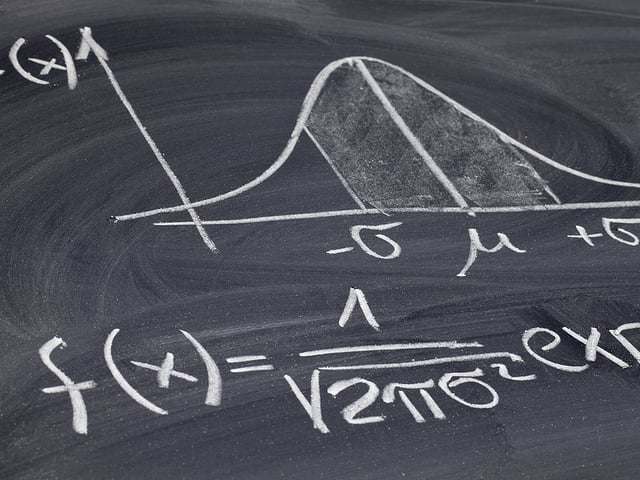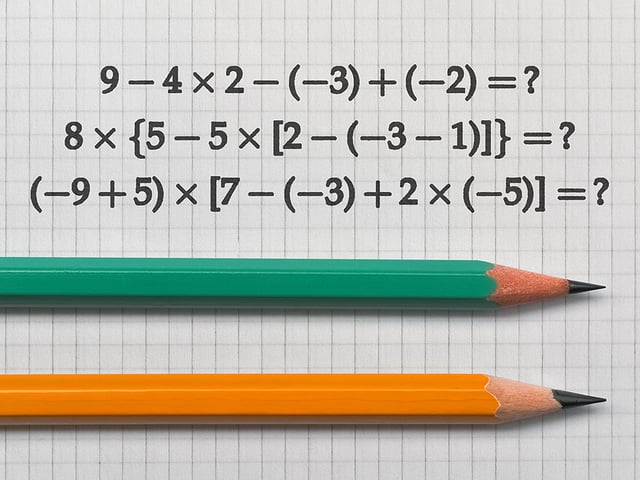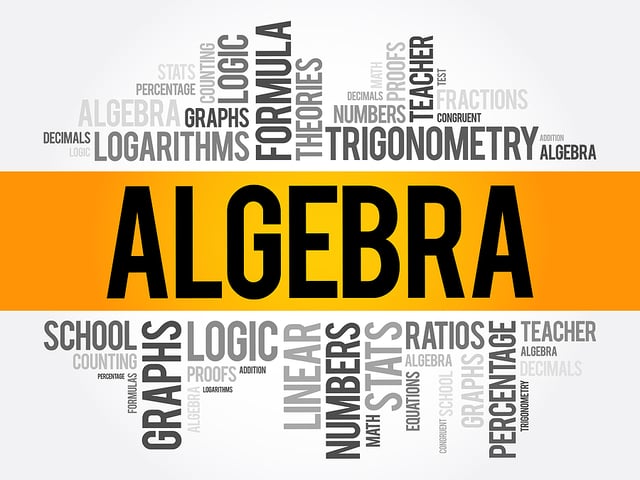
Formula Chart for Statistics and Probability on the SBAC Test
These days, statistics is getting more and more important. A lot of things, from Google search results to the ads you see on the Internet, are based on statistics. Do you want to understand how these work, and also ace the SBAC Test? You have to start from the basics. In the following chart, you’ll find the essential Statistics and Probability formulas you’ll need to solve problems on the SBAC Test. Even though you’re not going to be able to use the chart during the actual test, it will help you study and prepare for it! Use it to solve the sample problems at Union Test Prep!
And don’t forget to check out the other charts about 11th-grade math on the SBAC:
Formulas for Statistics and Probability
| Category | Formula | Symbols | Comment |
|---|---|---|---|
| Statistics | \(\overline{x} = \dfrac{\Sigma x_i}{n}\) | \(\overline{x}\) = sample mean \(x_i\) = value of each measurement \(n\) = number of measurements |
|
| Statistics | \(\mu = \dfrac{\Sigma x_i}{N}\) | \(\mu\) = population mean \(x_i\) = value of each measurement \(N\) = number of items in the population |
|
| Statistics | \(Md = (\frac{n+1}{2})^{th} \ term\) | \(Md\) = Median \(n\) = number of measurements (odd) |
|
| Statistics | \(Md = \dfrac{(\frac{n}{2})^{th} \ term + (\frac{n}{2} +1)^{th} \ term}{2}\) | \(Md\) = Median \(n\) = number of measurements (even) |
|
| Statistics | \(Q_1 = \frac{1}{4} \cdot (n+1)^{th} \ term\) \(Q_2 = \frac{2}{4} \cdot (n+1)^{th} \ term\) \(Q_3 = \frac{3}{4} \cdot (n+1)^{th} \ term\) |
\(Q_1\) = Lower Quartile \(Q_2\) = Middle Quartile \(Q_3\) = Upper Quartile |
|
| Statistics | \(IQR = Q_3 - Q_1\) | \(IQR\) = Interquartile Range \(Q_1\) = Lower Quartile \(Q_3\) = Upper Quartile |
|
| Statistics | \(rg = lv - sv\) | \(rg\) = range \(lv\) = largest value in the data set \(sv\) = smallest value in the data set |
|
| Statistics | \(s = \sqrt{\Sigma(x_i- \overline{x})^2 / (n-1)}\) | \(s\) = Standard Deviation \(\overline{x}\) = mean \(x_i\) = value of each measurement \(n\) = number of measurements |
|
| Statistics | \(V = s^2\) | \(V\) = Variance \(s\) = Standard Deviation |
|
| Statistics | \(CV = RSD = 100 \cdot \frac{s}{\overline{x}}\) | \(CV\) = Coefficient of Variation \(RSD\) = Relative Standard Deviation \(s\) = Standard Deviation \(\overline{x}\) = mean |
|
| Statistics | \(r_i = y_i -\hat{y_i}\) | \(r_i\) = Residual \(y_i\) = Observed Value \(\hat{y_i}\) = Predicted Value |
|
| Statistics | \(r_{xy} = \dfrac{\displaystyle\sum_{i=1}^{n}(x_i-\overline{x}) \cdot (y_i-\overline{y})}{\sqrt {\displaystyle\sum_{i=1}^{n}(x_i-\overline{x})^2 } \cdot \sqrt {\displaystyle\sum_{i=1}^n(y_i-\overline{y})^2}}\) | \(r_{xy}\) = Pearson’s Correlation Coefficient \(x_i, y_i\) = Individual Sample Points indexed with i \(n\) = Sample Size \(\overline{x}\) = Sample Mean For x \(\overline{y}\) = Sample Mean For y |
|
| Probability | \(p= \frac{d}{t}\) | \(p\) = Probability of an Event \(d\) = Number of Ways Desired Event Can Occur \(t\) = Total Number of Possible Events |
|
| Probability | \(P(A \cup B) = P(A) + P(B) - P(A \cap B)\) | \(P(A \cup B)\) = Probability of A or B \(P(A)\) = Probability of A \(P(B)\) = Probability of B \(P(A \cap B)\) = Probability of A and B |
Rule of Addition |
| Probability | \(P(A \cap B) = P(A) \cdot P(B)\) | \(P(A \cap B)\) = Probability of A and B \(P(A)\) = Probability of A \(P(B)\) = Probability of B |
Independent Events |
| Probability | \(P(A \cap B) = 0\) | \(P(A \cap B)\) = Probability of A and B | Mutually Exclusive Events |
Keep Reading

Smarter Balanced Assessment Consortium Blog
Formula Chart for Numbers and Operations on the SBAC Test
Most people say that Math is hard for them. Does this sound like you? A…

Smarter Balanced Assessment Consortium Blog
Formula Chart for Algebra on the SBAC Test
Have you ever painted by number? It’s probably the easiest way to paint…

Smarter Balanced Assessment Consortium Blog
Formula Chart for Geometry on the SBAC Test
Geometry is literally everywhere! It’s in the shape of the stars and pl…